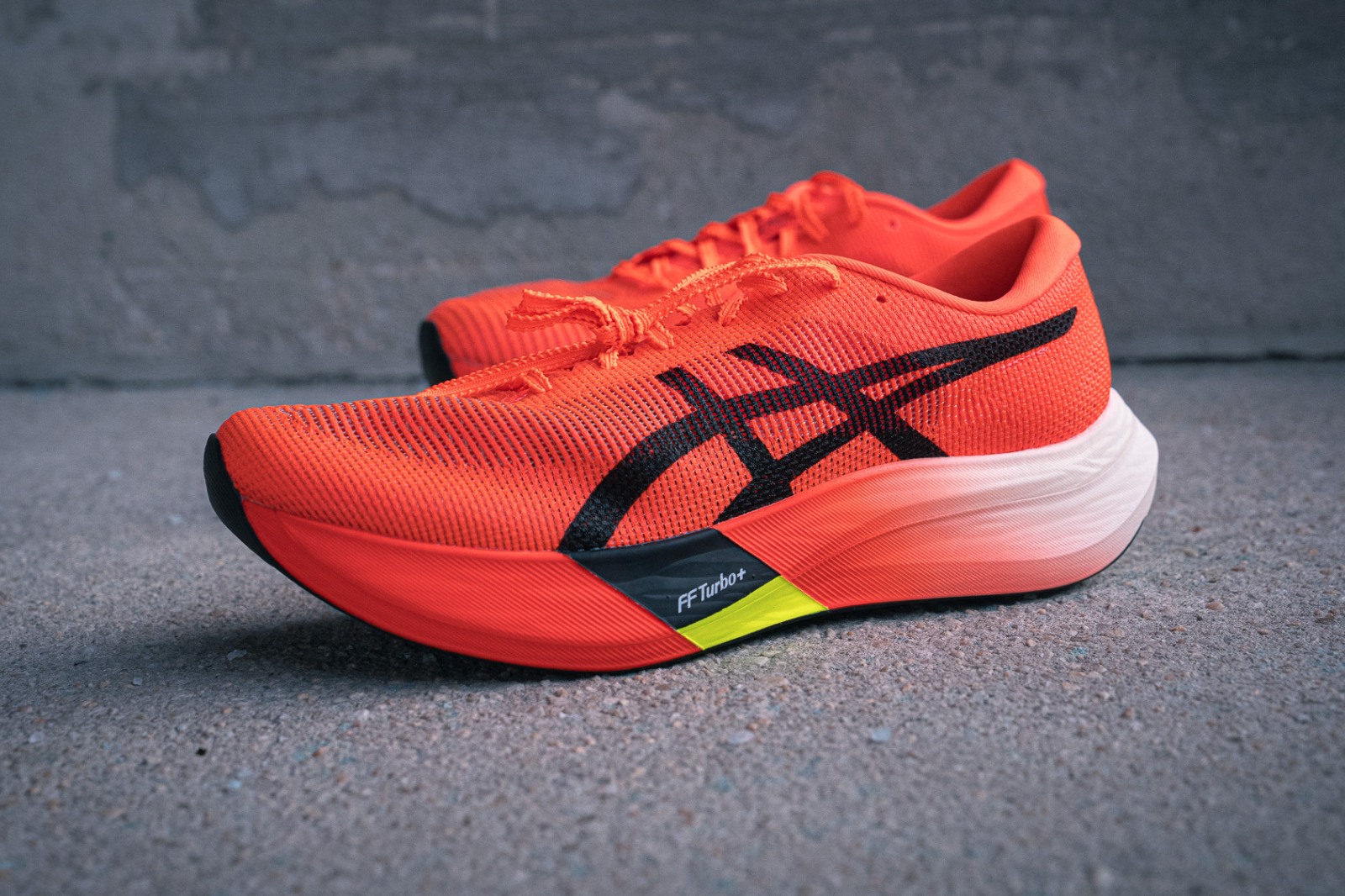
We independently review everything we recommend. When you buy through our links, we may earn a commission.
6.4 oz. (183 g) for a US M9 (unisex), both shoes
39.5 mm in heel, 34.5 mm in forefoot (5 mm drop), both shoes
Racing up to the marathon distance
Flytefoam Turbo Plus midsole (Asics’ version of PEBA), Motionwrap 2.0 upper, ASICSGRIP outsole, different design for different runners
March 4 for $250















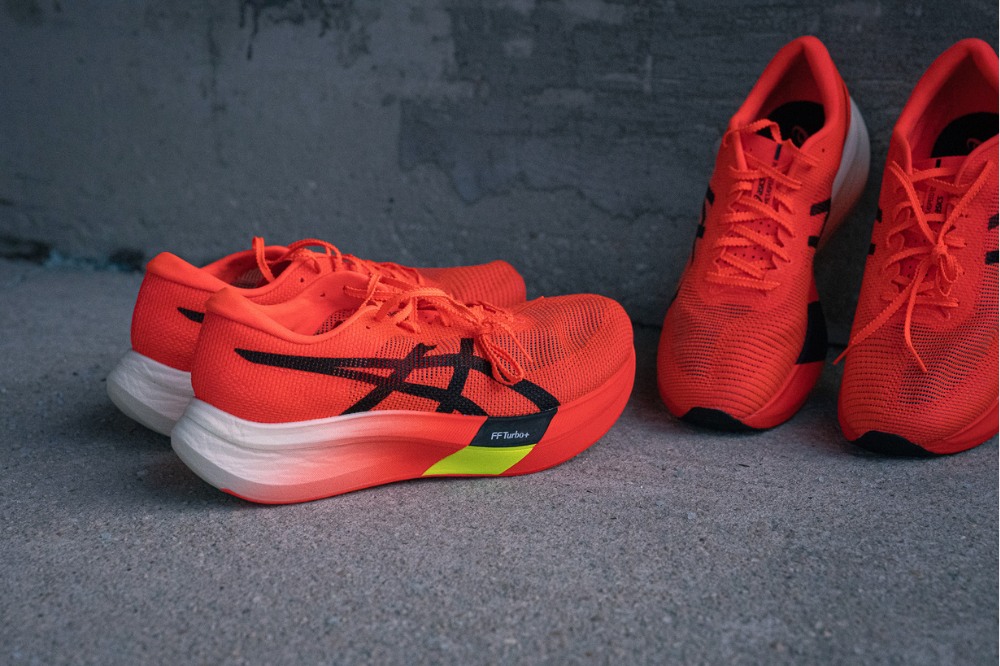
Asics Metaspeed Sky Paris (left)
It’s an Olympic year, which means the hottest marathon shoes are dropping left and right in anticipation of the games. In the past couple months, we’ve seen the releases of the Nike Alphafly 3, Saucony Endorphin Pro 4, Puma Fast-R Nitro Elite 2, New Balance SC Elite v4, and the Adidas Adizero Adios Pro Evo 1. But Asics was the one major player that had yet to reveal their hand, even though the shoe was revealed on the feet of Clayton Young during the U.S. Olympic Marathon Trials as he locked down a spot for Paris 2024. That shoe, of course, is actually those shoes: the Asics Metaspeed Sky Paris and Metaspeed Edge Paris.
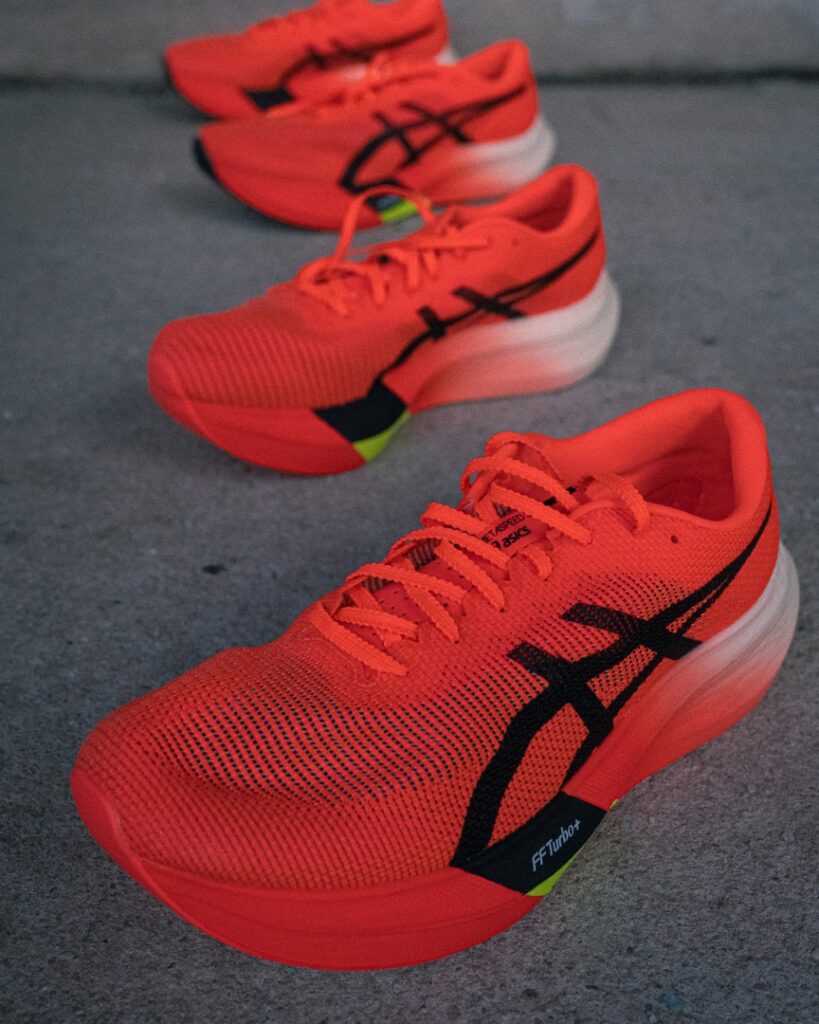
Named for the 2024 Olympics
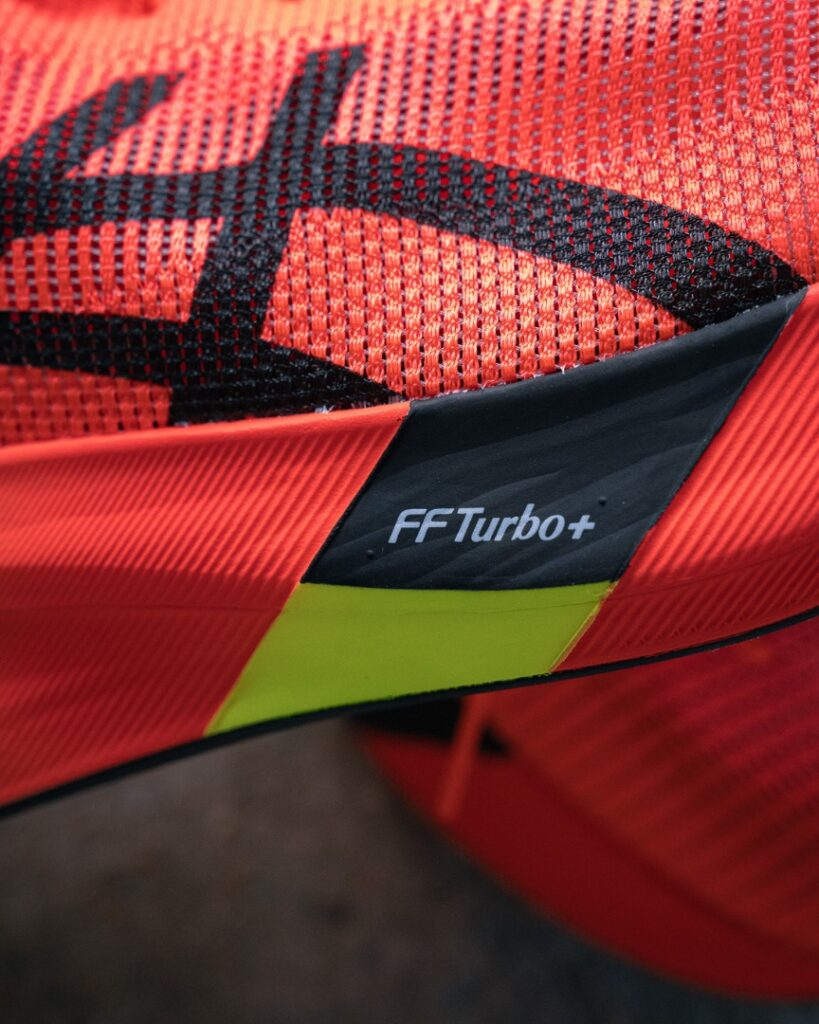
The neon and black blocks delineate the carbon plate placement
Let’s get the naming convention out of the way. It seems a bit wacky at first glance, but it follows a trend of Asics mixing it up when it comes to their marathon shoes. After all, this is the fourth naming convention in five years for Asics’ race day models: Metaracer Tokyo, Metaspeed Sky, Metaspeed Sky+/Edge+, Metaspeed Sky Paris/Edge Paris. There’s no rhyme, but there is reason behind this newest version– in Olympic years, Asics would name their signature models after the event, which is how we ended up with shoes like the Mexico 66 (which debuted at the ‘68 Olympics) and the aforementioned Metaracer Tokyo.
Of course, that still leaves us with two options for race day. The question is: How have they improved and which one is best for you? That’s what we’ll try to figure out in the following sections.
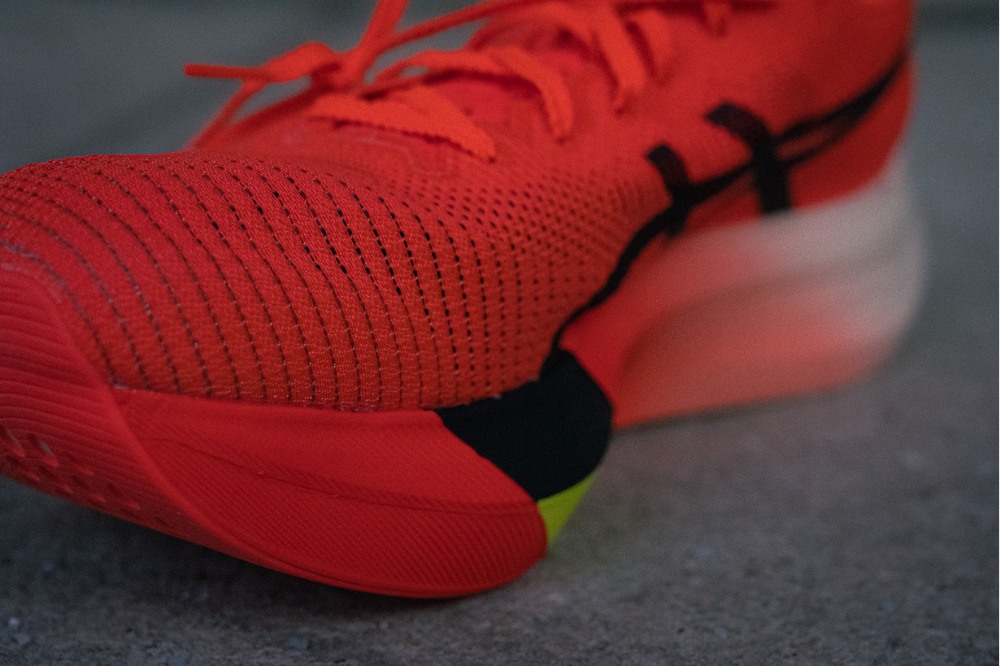
Motionwrap 2.0 upper is incredibly breathable
At first glance, or during a race, the shoes look identical. Ember neon red upper, black tiger stripes, a bit of neon yellow and black on the midsole.
Get into their guts and they’re two very different shoes.
But first– if you’re not familiar with the Metaspeed Sky and Edge, let’s dial it back. In 2021, Asics released both the Sky and Edge, specifically designed with two distinct running styles in mind. Most runners are “stride” runners, which means they have a longer gait with longer periods in the air. The Metaspeed Sky was designed for them. But then there are “cadence” runners, who increase their speed by both extending their stride length and increasing the number of steps they take in a minute. The Metaspeed Edge was designed for them.
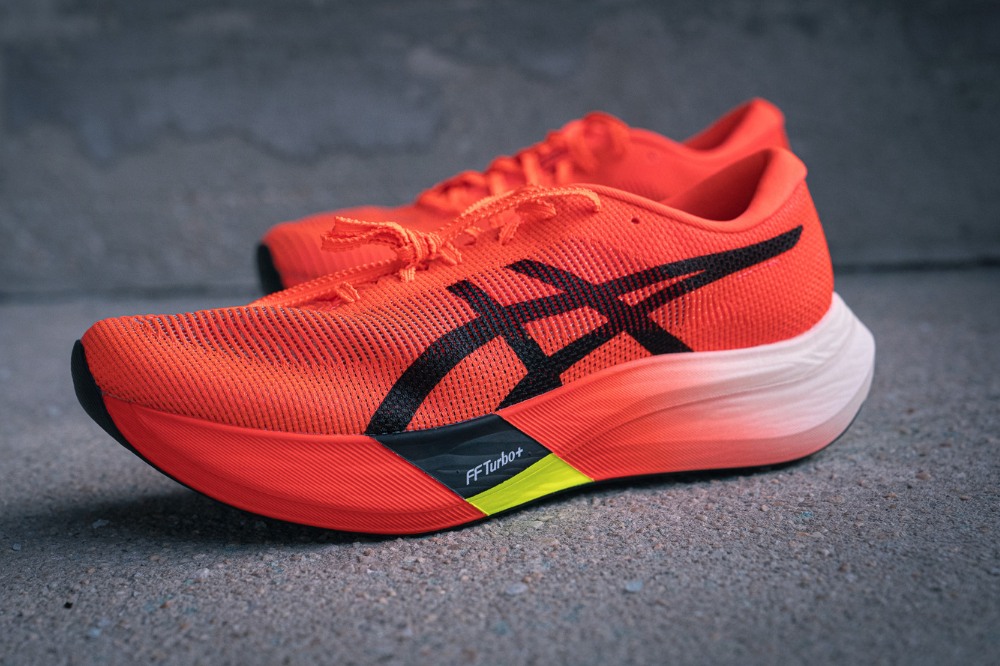
The Metaspeed Edge Paris features a scooped carbon plate…

… while the Metaspeed Sky Paris features a plate closer to the foot
The same theory essentially applies to the newest duo, though instead of putting you inside a certain box based on your run style, Asics wants you to run in what feels best under your own foot. That said, the baseline remains– if you’re more of a stride runner, you should run in the Metaspeed Sky Paris, if you’re more of a cadence runner, you should run in the Metaspeed Edge Paris.
When attempting to differentiate the shoes on foot, just look at the color blocking section in the forefoot on the midsole. The line between the black and neon yellow is where the plate comes through. On the Sky Paris, the curved plate sits higher and is closer to the foot, while on the Edge Paris, the plate has a more aggressive scoop in the forefoot, sitting lower in the shoe.
There’s a lot to cover here across both models, so I’ll do my best to get through it quickly. I could type out all the specs, but instead, I’ll just include the following visual.
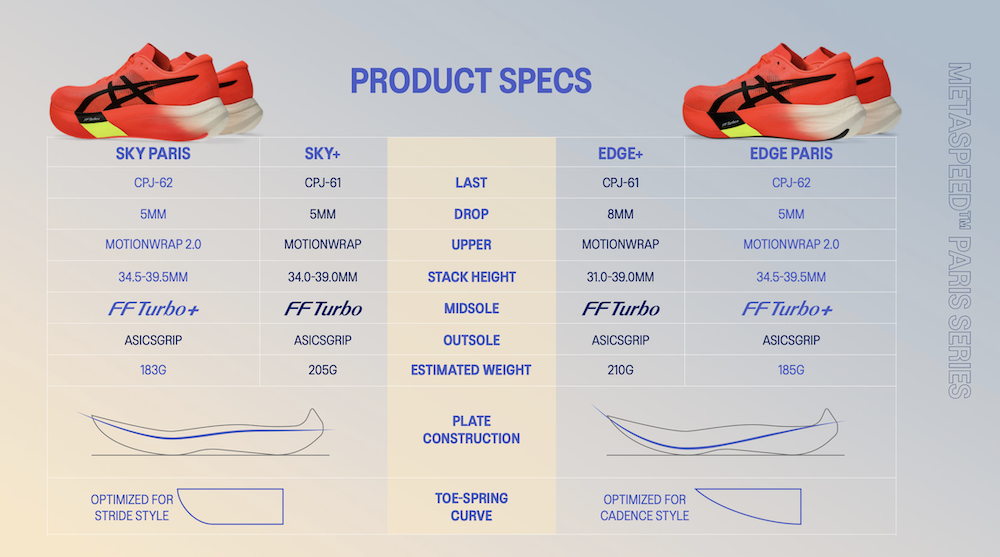
They both also feature a Motionwrap 2.0 upper which is even more breathable and flexible than the Metaspeed Sky+/Edge+ (one of the weak parts of those shoes), but offers better security. They also both come in at the same stack height and drop (39.5 mm in the heel/34.5 in the forefoot, 5 mm drop).
A new last also provides better arch support and a more stable platform in the forefoot. Lastly, the ASICSGRIP outsole (one of the grippier rubbers out there) has been updated with a lower density, likely to cut weight. It still provides superb traction with the rubber strategically placed in key areas underfoot.
Specific differences:
> Metaspeed Sky Paris
In this specific model, a full-length carbon plate is positioned closer to the foot and is wider in the forefoot (12% wider, to be precise), as you can see in the above comparison chart. The goal is to provide a better bounce out of the foam, while the extended medial edge provides a bit more stability.
> Metaspeed Edge Paris
In the Edge Paris, the full-length carbon fiber plate is a spoon-shaped geometry, with the goal of providing increased forward propulsion. The forefoot also features a 3 mm increase in stack height, which of course means more foam which translates to greater cushion (20% larger returnable volume, to be precise).

Race-ready laces
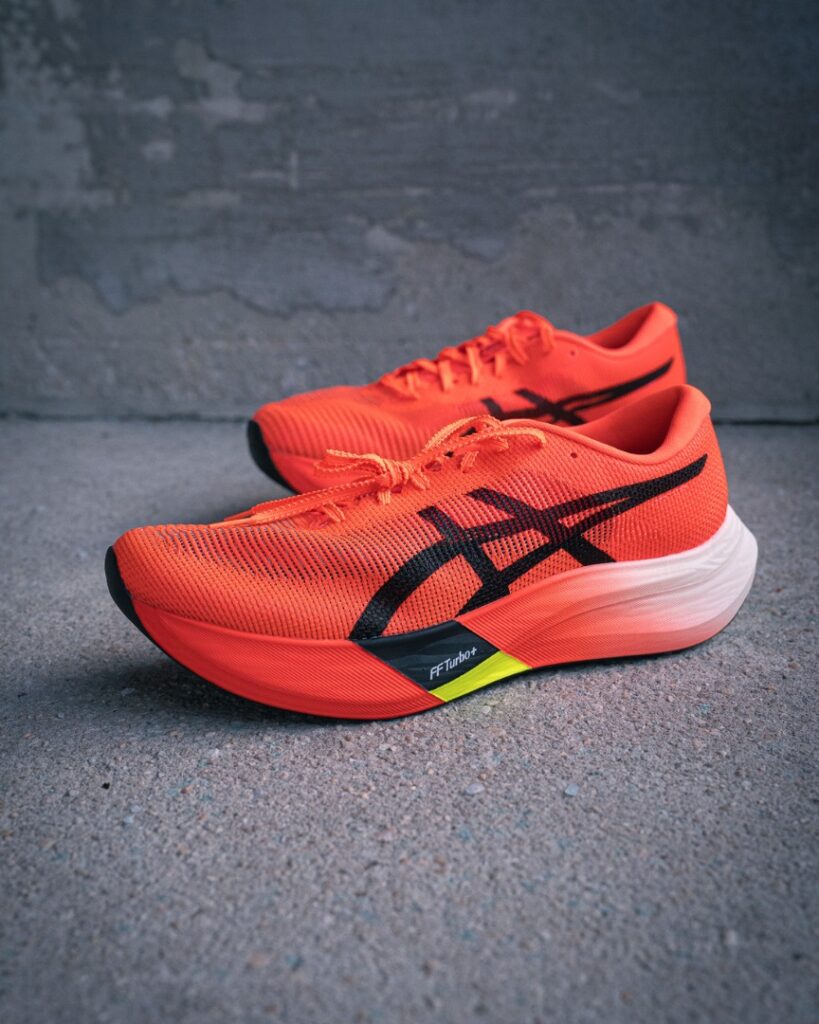
Flytefoam Turbo Plus midsole
Thomas and Meaghan have been running in this shoe over the past several days, for everything from long runs and workouts. So while this isn’t a full review, we can give you some thoughts to whet your appetite (you can also watch the full YouTube review below).
First off, the shoe is incredibly light. As noted above, it’s the lightest racing shoe in its class, but it doesn’t sacrifice anything when it comes to performance. The upper is super lightweight and breathable. It’s as good as any upper on a race day shoe right now.
A big issue we had with past versions of the Metaspeed models was their comfort over long distances. While I personally loved the Metaspeed Edge+ for any distance, my legs did get beat up at the marathon distance. That appears to have been fixed in both the Metaspeed Sky Paris and Edge Paris.
The softer durometer of the Flytefoam Turbo Plus, in addition to the increased forefoot foam in the Edge Paris, gives it a more comfortable and cushioned feel, while the wider forefoot in the Sky helps disperse the pounding into the pavement.
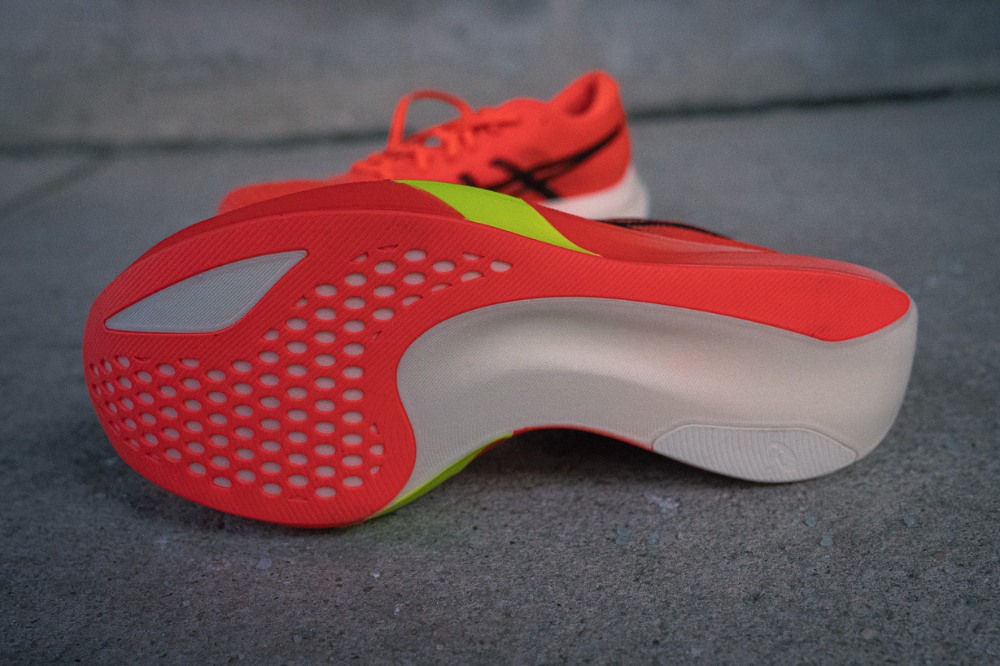
ASICSGRIP outsole on the Metaspeed Sky
The most notable changes across both models are the weight savings, midsole material, and upgraded upper.
Let’s talk about the weight savings first. As it stands, both the Sky Paris and Edge Paris are the lightest marathon shoes on the market aside from the ultra-premium and impossible-to-get Adios Pro Evo 1. They even beat out the Vaporfly 3 by a good third of an ounce. They shaved off about 10% of their weight from the previous versions. That’s significant.
Most exciting is Asics’ own recipe of a PEBA-style foam in the Flytefoam Turbo Plus (Pebax is a proprietary blend and PEBA is the generic term, much like Kleenex vs. facial tissue). This foam is a significant update, making both softer but bouncier, with a goal of saving the legs over longer distances. According to Asics, Turbo Plus offers an 8% greater energy return over Turbo, while it’s 6% softer and 8% lighter.
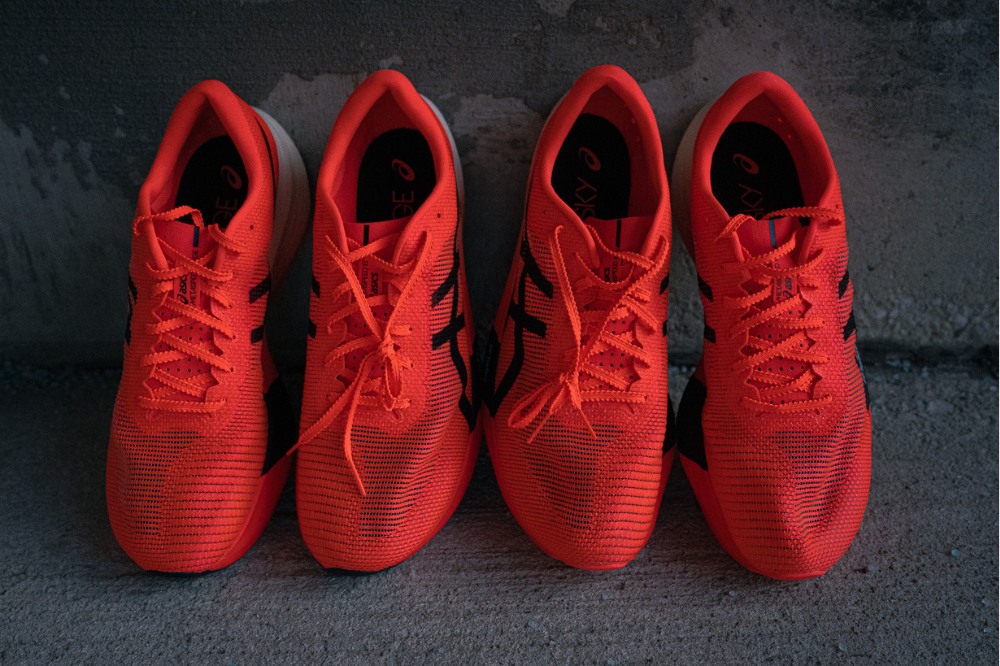
Interestingly, the new changes seemed to have reversed the feel of the shoes. The Metaspeed Edge+ was a snappy and aggressive shoe, which was both its strength and its weakness. It felt fantastic at a half marathon and less, but started to feel a little harsh on longer distances.
With the changes in the Paris models, the Metaspeed Sky Paris now feels a bit more stable since the plate is closer to the foot.
While Asics tries to guide you into your best shoe based on the stride vs. cadence metric, we still think it should come down to whatever feels best. For us, we’re leaning towards the Edge Paris because it seems to provide a bit more comfort over the long haul; however, if you like feeling the plate and that kickback from the energy it gathers up on rebound, then the Sky Paris may be for you.
It’s also worthwhile to note that most Asics athletes have been racing in the Metaspeed Edge Paris.
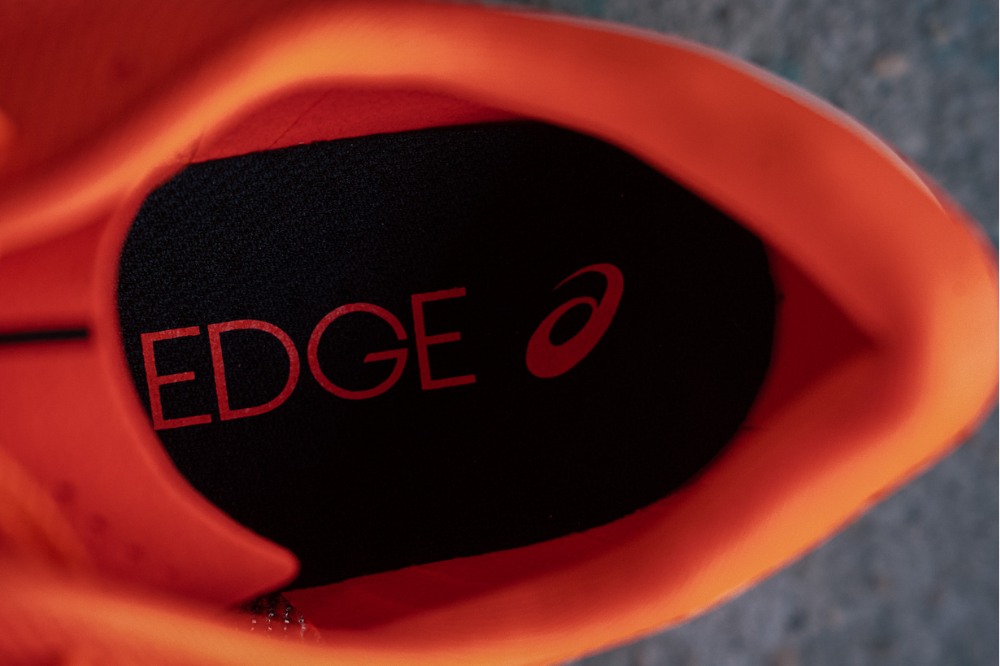
Overall, Asics made some huge strides with both the Metaspeed Sky Paris and Edge Paris. By bringing the weight into the 6-ounce range and upping the rebound of the midsole foam and dialing in the plate, they’ve proven they have a serious contender that stacks up – and maybe even beats – every competitor in its range.
You can pick-up the Asics Metaspeed Sky Paris and Edge Paris on March 4 for $250 by using the shop links below.
Shop Asics Metaspeed Sky Paris Shop Asics Metaspeed Edge ParisHave something to say? Leave a Comment

Robbe is the senior editor of Believe in the Run. He loves going on weird routes through Baltimore, finding trash on the ground, and running with the Faster Bastards. At home in the city, but country at heart. Loves his two boys more than anything. Has the weakest ankles in the game.
More from Robbe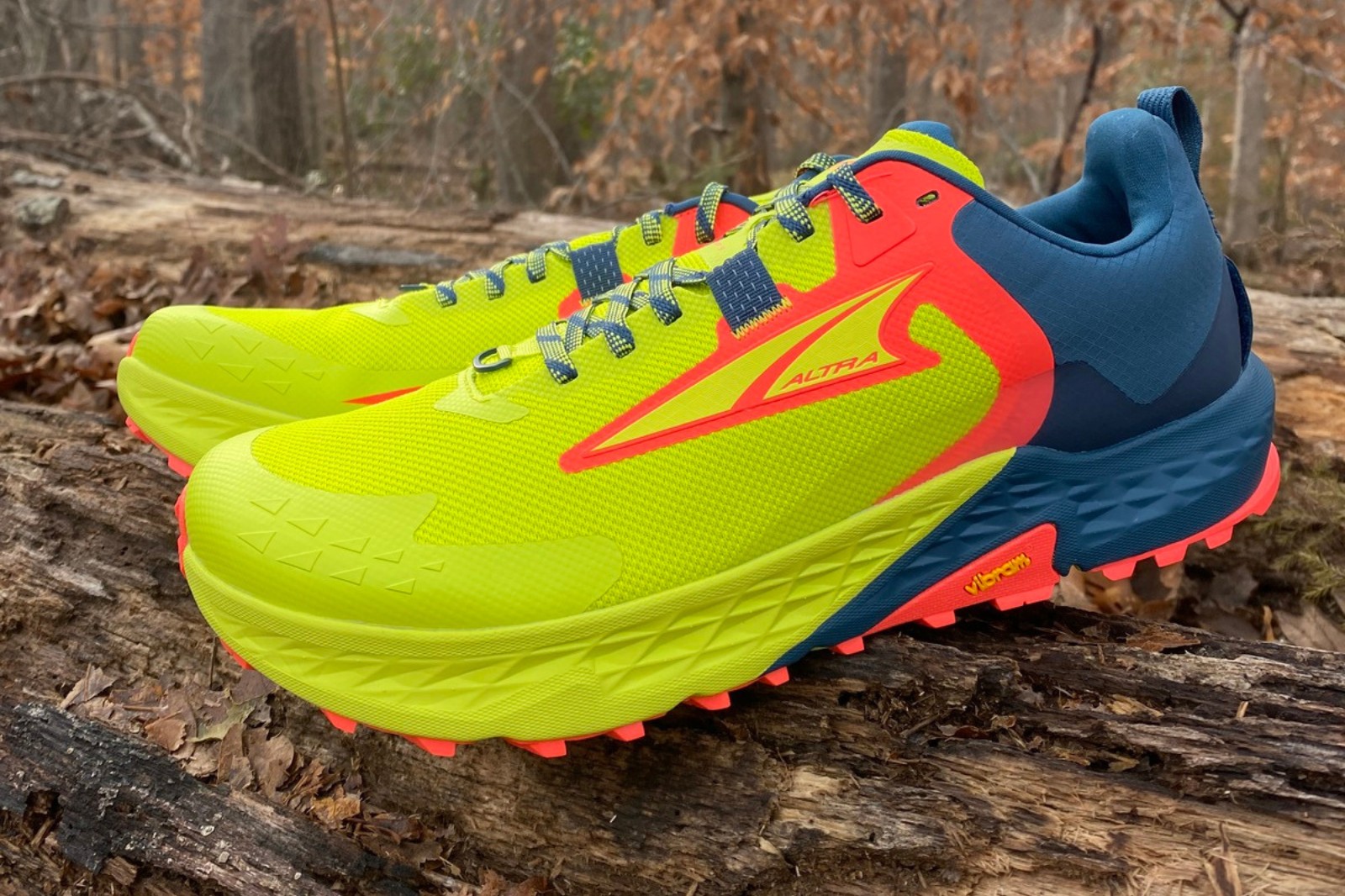
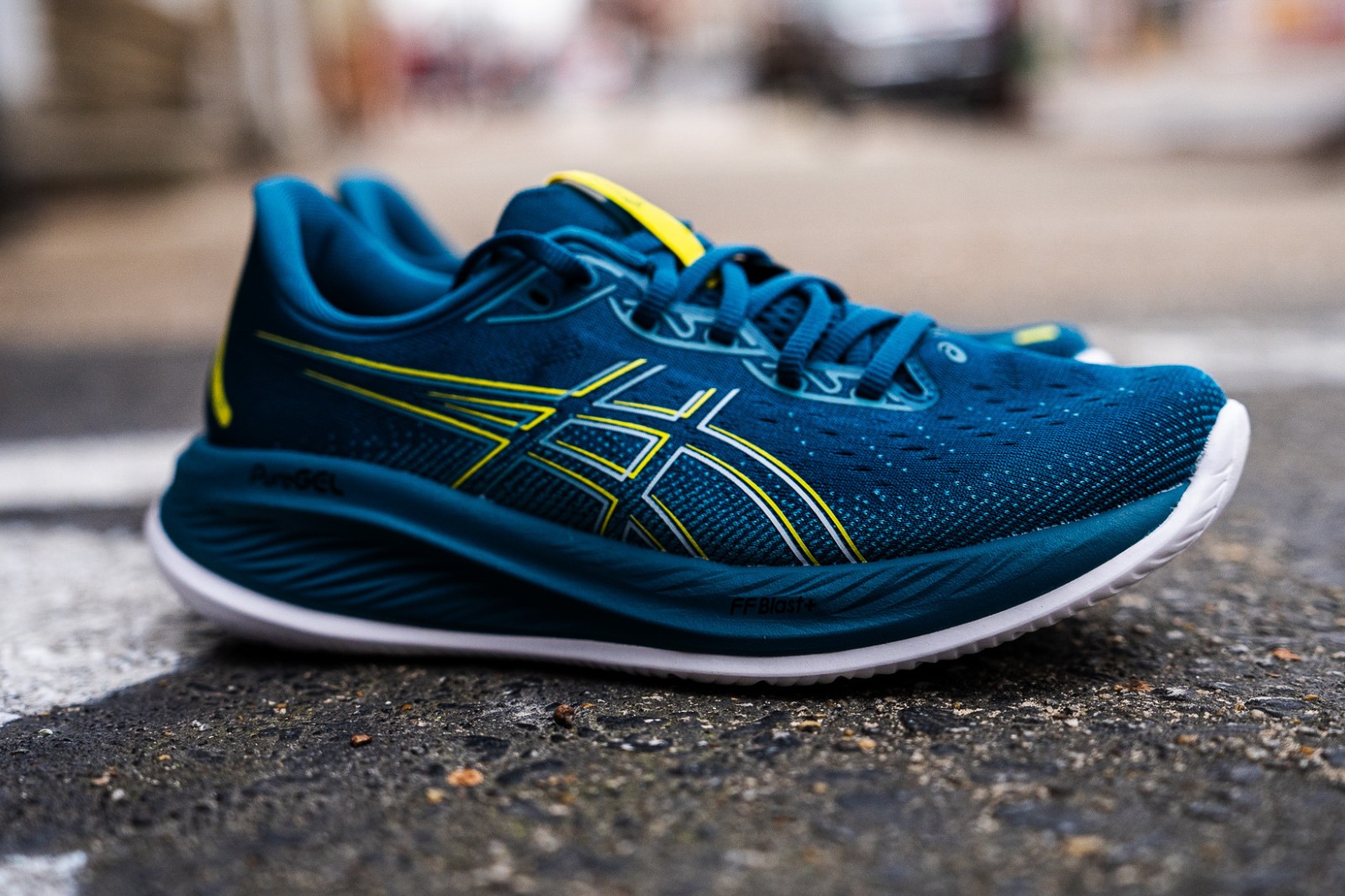
Notifications
PEBA (polyether block amide) is not proprietary. Pebax is the brand most associated with it. Pebax to PEBA is what Kleenex is to tissue.
Thanks for the heads up! Fixed.
I have both previous versions of the Sky. I like the feel of them up to about 10K, but I feel it enough in my back and quads that I probably wouldn’t do a half marathon in them (granted I am 67 yrs. old now). Would the Edge Paris maybe have a little more comfort for up to the half distance?
Edge Paris has much more comfort this go-around, should be more than enough cushion for a half distance.
I am wondering how stable the Asics edge paris is? I am a heel to midfoot striker and slight pronator? Is it okay for slower paces ie 4.50 – 5.20 min per km. Thanks
Honestly not very stable, you’d be better off with something like the Hoka Rocket X 2 or Salomon S/Lab Spectur
I own the Magic Speed 3 which I enjoy a lot. I Worwould like a bit more comfort though for longer than 10k runs. Which of the Sky and Edge is more like the Magic Speed 3. And which of them would you recommend for more comfort? Thanks.
Metaspeed Sky is closer to the Magic Speed, Edge has a touch more comfort.
Which version is the better option for mid/ fore foot strikers?